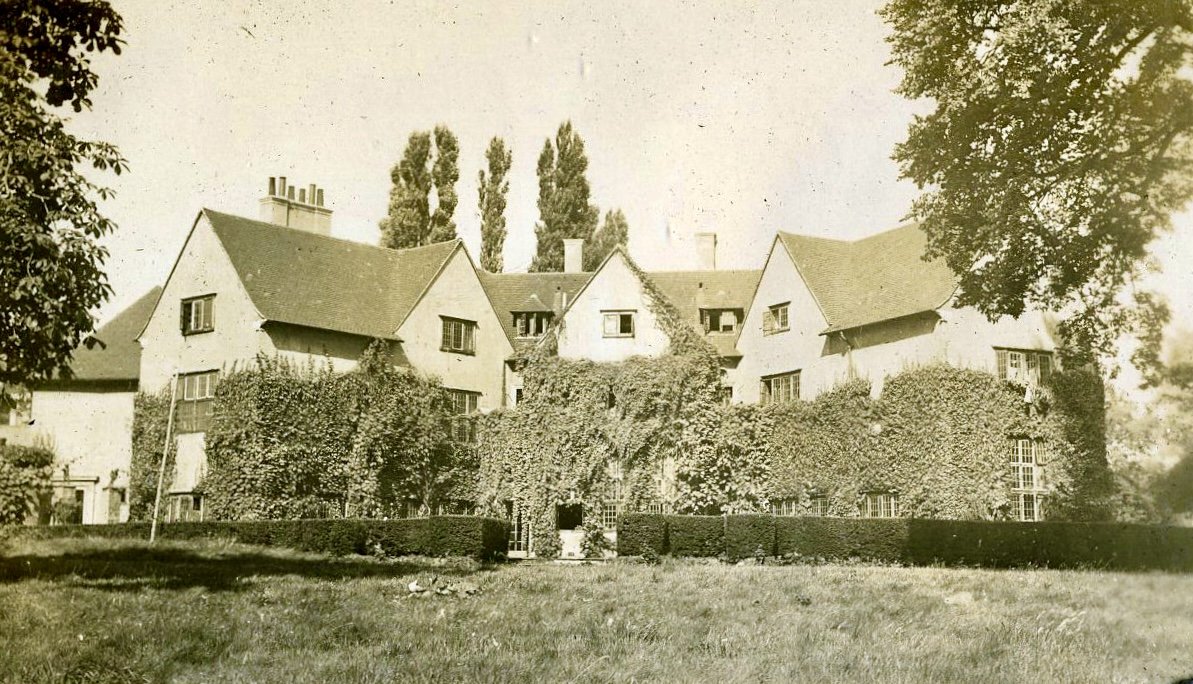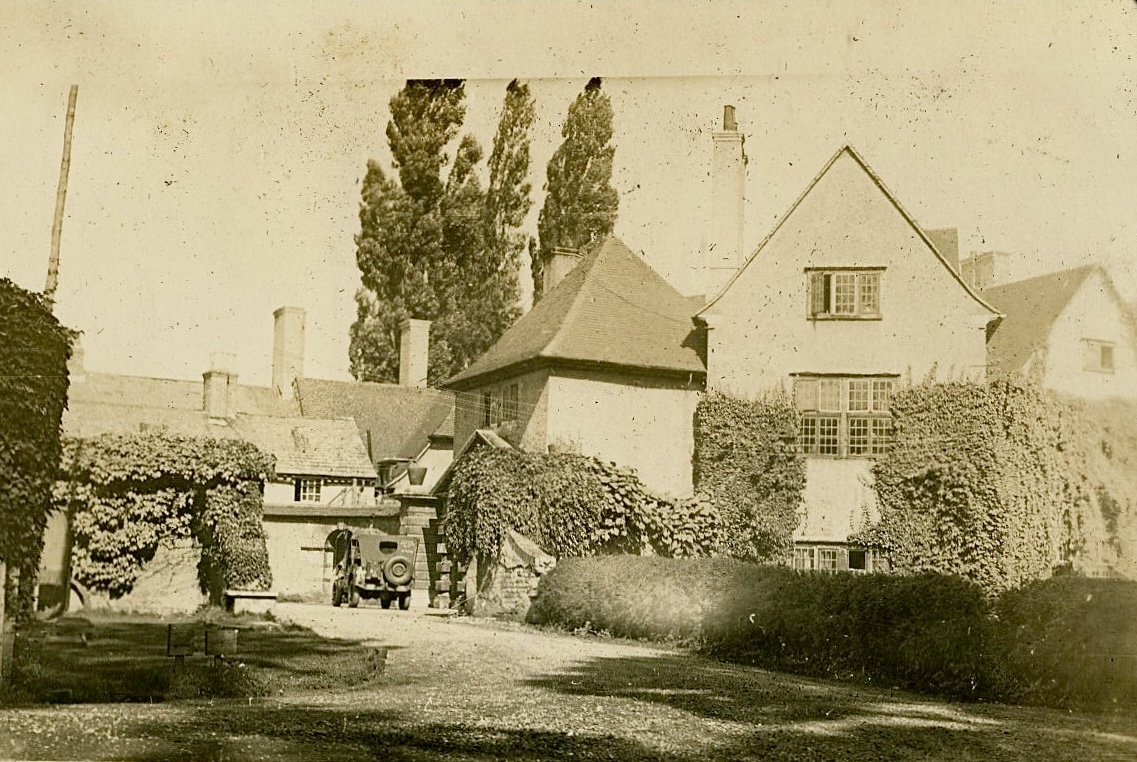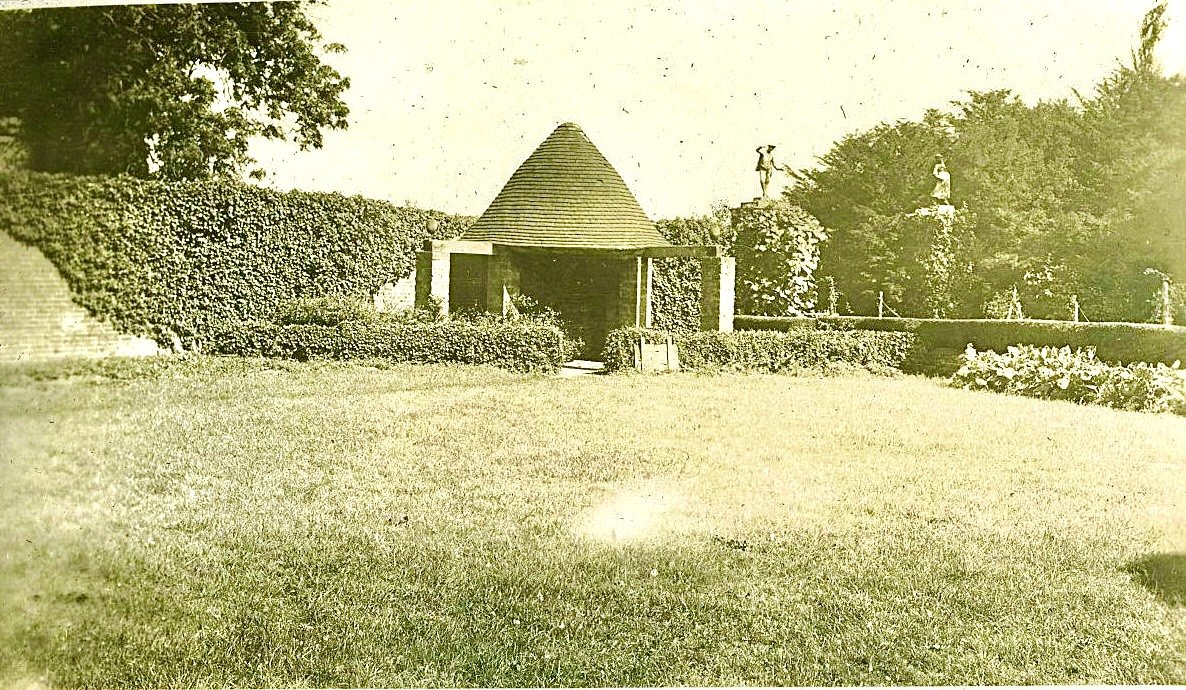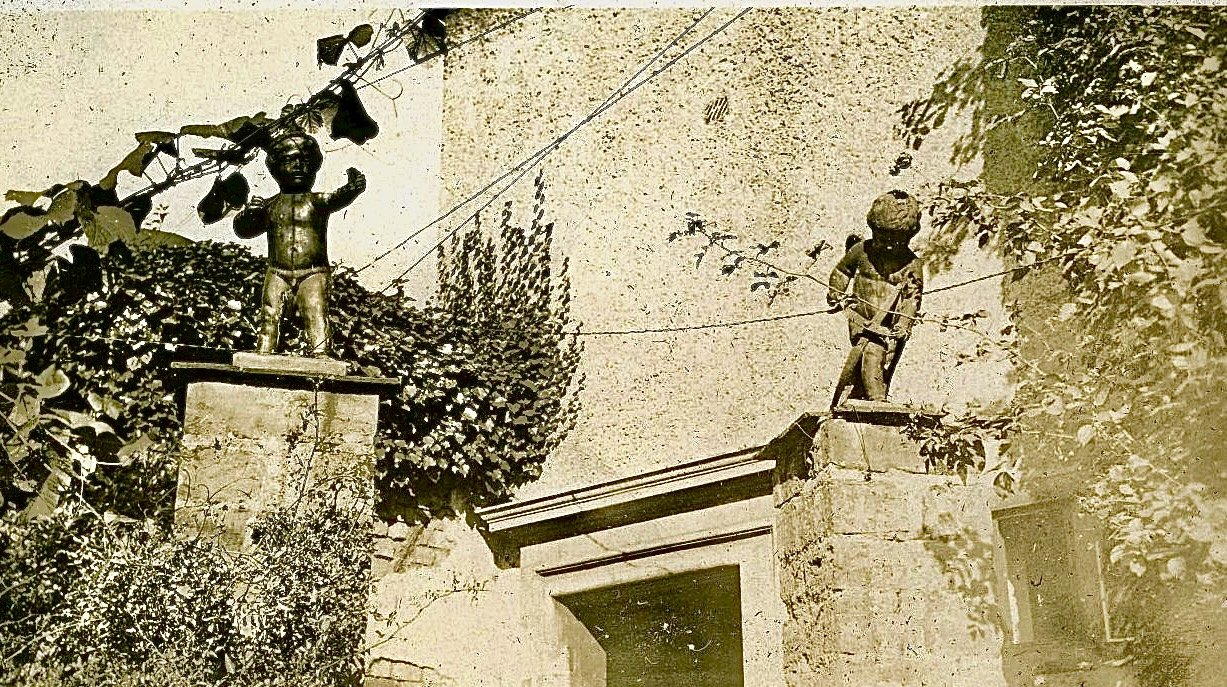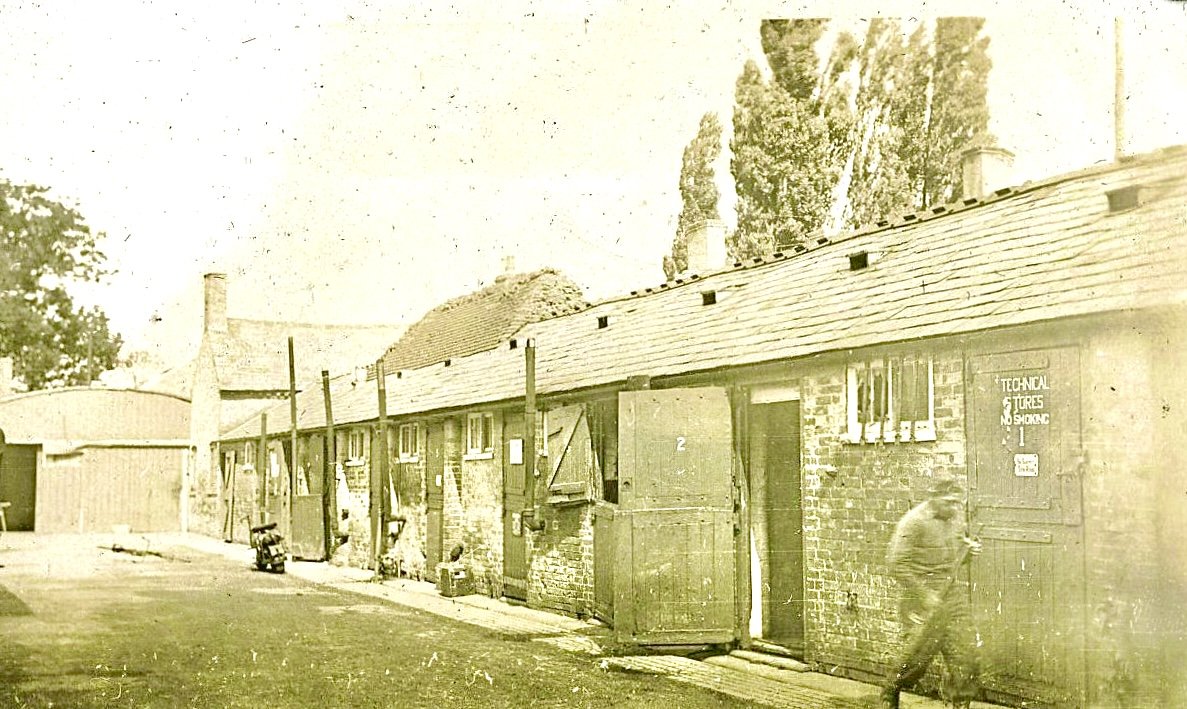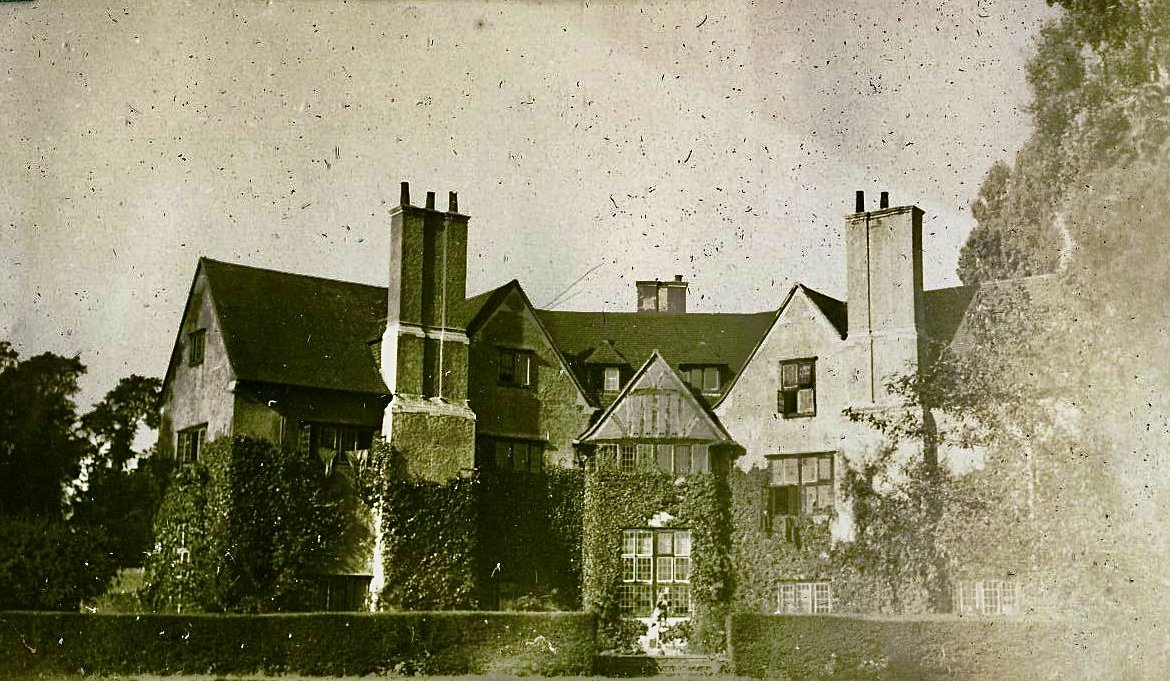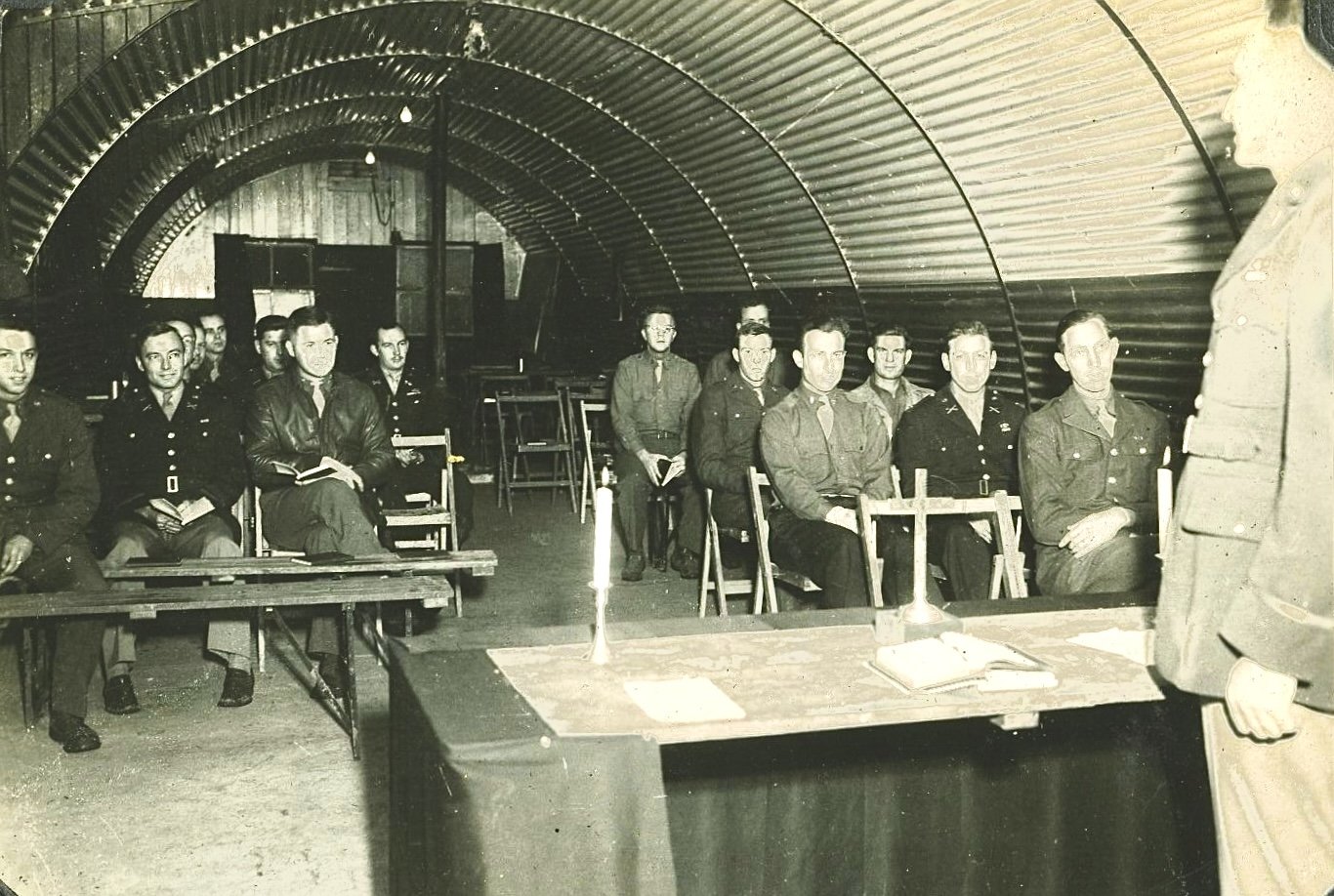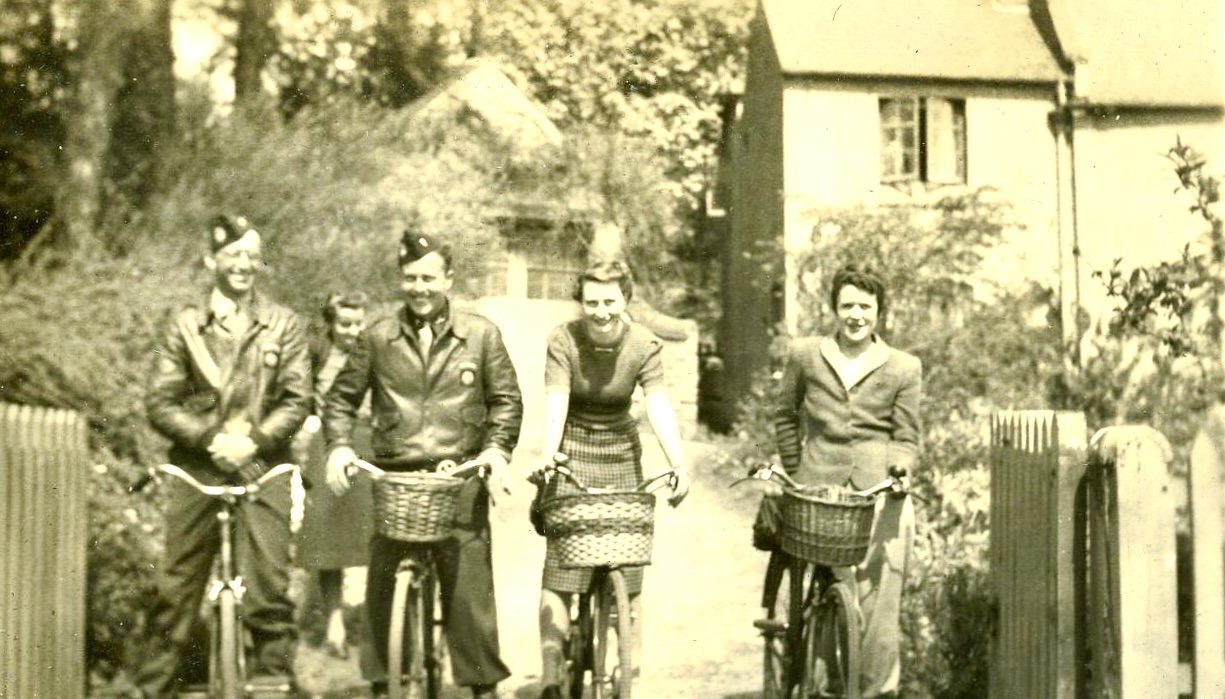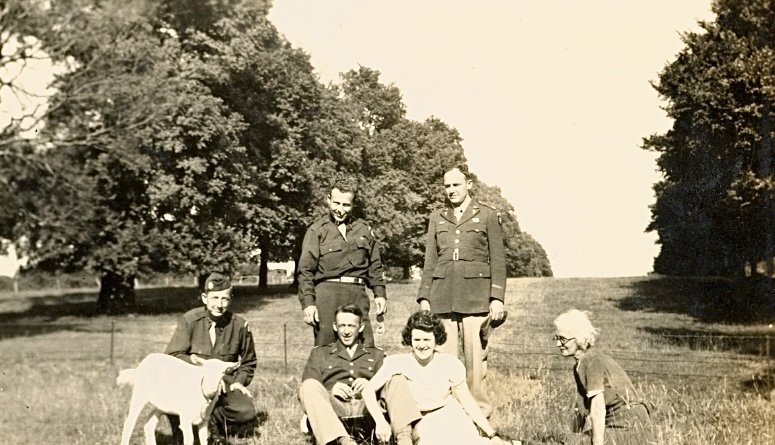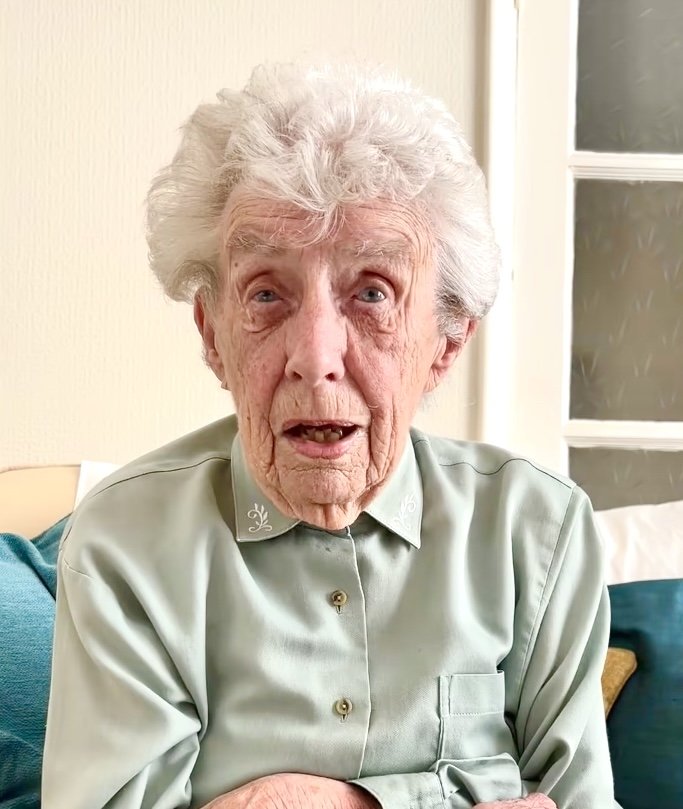Market Harborough 1944
Stories & Video Interviews
Minnie Curzon
Papillon Hall
Minnie Curzon
Minnie Curzon was born in London, England in 1928.
18 year old Minnie Curzon
When she was 11 years old, in September of 1939, war was breaking out in Europe. Minnie and her siblings were evacuated from their London school and sent to the town of Market Harborough, about 90 miles northwest of England’s capitol. At the time, Market Harborough was a British Royal Air Force station in the county of Leicestershire.
Minnie and her younger brother, sister and mother were billeted at a house owned by a British family of Italian heritage, the DeFazios. Mr. DeFazio made a living by making and selling ice cream.
When she was 14, Minnie left school and got a job in a local corset factory, which was partially converted for the manufacture of parachutes to support the war effort. The production of corsets and parachutes went on simultaneously.
American soldiers and Royal Air Force troops would come to the factory and invite the young girls (age 15 – 16) to dances that the “Yanks” put on. Some of the girls were married to husbands who were off fighting the war, but many of these young women still went to the dances. Minnie did not participate as the dancing and shows were “not her thing.”
The dances were held in an aerodrome (a military air base) where the young ladies would also perform “dancing shows” to entertain the young troops.
The DeFazio family would make their ice cream in milk churns and would put the sweet dessert in large containers as they went around town selling their products. Because the provincial local citizens were suspicious of anyone with a foreign-sounding Italian name – since England was then at war with Italy – Mr. DeFazio felt the need to write “I am a British Citizen” on the side of his ice cream containers in hopes of avoiding any conflict.
Minnie and her friends from the corset/parachute factory would also go potato picking at a local farm. Interestingly, they would often go to the farm with Italian prisoners of war, who wore colored uniforms so the locals could identify them. But the POWs were free to walk around town and apparently were not imprisoned. Some of the local girls ended up marrying these young Italians as well as American soldiers.
The local “Harborians” were quite provincial and reportedly distanced themselves from those who weren’t from the local area, including the “dirty, filthy” Londoners. Because of this Minnie never mixed with the local Market Harborough children.
The London teachers who accompanied Minnie and her London friends – especially her music teacher – said to her London students, “Let’s show these Harborough children how we can sing. Let’s shout the roof off.” And they did. The song they sang is one of the most famous and popular hymns in England. It is called JERUSALEM.
Written in 1808 by poet William Blake, the rousing hymn “Jerusalem” became a symbol of hope during World War I and has been sung with gusto by the British people ever since. Blake was inspired by the legend of Jesus Christ visiting Glastonbury, England with Joseph of Arimathea.
JERUSALEM: THE LYRICS
And did those feet in ancient time
Walk upon England’s mountains green?
And was the holy Lamb of God
On England’s pleasant pastures seen?
And did the Countenance Divine
Shine forth upon our clouded hills?
And was Jerusalem builded here
Among these dark Satanic mills?
Bring me my bow of burning gold.
Bring me my arrows of desire.
Bring me my spear, O clouds unfold!
Bring me my chariot of fire.
I will not cease from mental fight,
Nor shall my sword sleep in my hand
Till we have built Jerusalem
In England’s green and pleasant land.
Minnie Curzon - 2022
At 93 years of age Minnie Curzon was interviewed in 2022.
She recalled her wartime experiences and candidly spoke of her home town of London and Market Harborough, England, during World War II.
Minnie Curzon died November 4, 2022. God Bless her soul.
The full video can be viewed below.
Minnie Curzon Video Interview
Papillon Hall
During the winter of 1944 the 82nd Airborne Division was stationed near Leicester, England. To hear the men talk of Leicester, you would think it was a combination of Venice, Paris and home. For, after all, they seen nothing to date except foxholes and cities in ruins. The 319th Battalion was bivouacked nearby at Papillon Hall in the town of Market Harborough, England. Market Harborough was a British Royal Air Force station, a place for allied military training, and also where glider troops went for training and replacement soldiers.
Papillon Hall itself was a large structure, first built in 1903, that was requisitioned by the army during World War II. It was used as a billet for the 319th Glidermen and the 82nd Airborne Division of the U.S. Army. The building itself was set-out in a butterfly pattern (Papillon means butterfly in French) with four distinct wings. The soldiers lived in the main building and a cluster of quonset huts. But no space was wasted, soldiers also slept in horse stables and barns.
In Leicester people spoke almost understandable English and were friendly, clean and civilized. The troopers gave the girls their glider wings and the parachute wings, now decorated with two combat-jump stars, and went jitterbugging at the Palais de Danse. They polished their boots until they shone, pressed their baggy pants, set their high-peaked caps at the fashionable angle, and strolled the streets; for, in the language of the day, they are very sharp troops and they take the greatest pleasure in this. Some 12,000 of them, experienced soldiers, and younger than you would believe, took over this corner of England, and the English actually liked it.
There were a certain number of pub fights and a certain amount of resultant disciplinary action. The English accepted all this calmly. If you take very young men and teach them to hold their lives lightly and to kill, and then expect them to go out and kill on your behalf, you can’t be indignant if they raise some hell outside the combat zone.
See Papillon Hall photos below - slide show, side controls to next image
